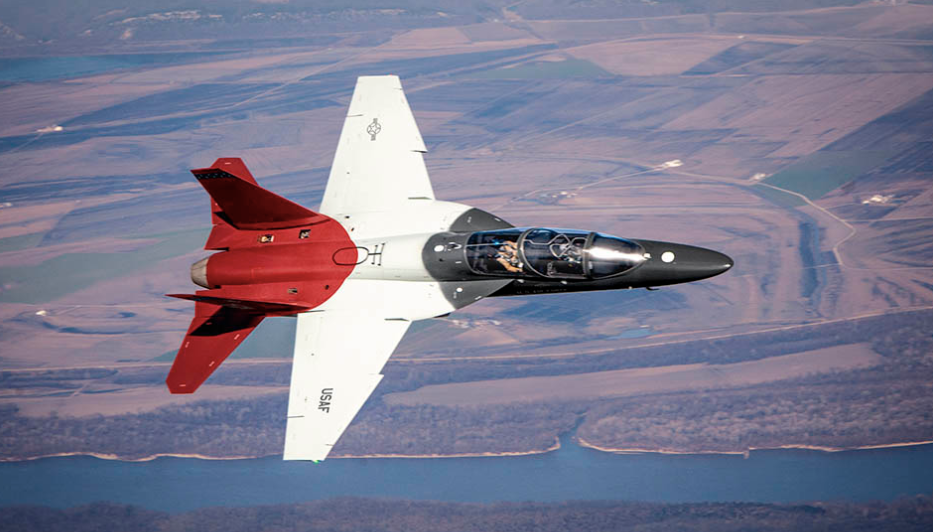
The T-7 training system includes the airplane, and also maintenance and training programs that will evolve with the aircraft’s mission. Boeing
Ahead of the Dubai Air Show this week in the United Arab Emirates, Boeing gave an update on its T-7 training platform program for the initial contractor, the U.S. Air Force.
Program manager and vice president Paul Niewald delivered the briefing on the T-7 from the current lead aircraft position on the production line, where he could walk around the airplane to show how new ways of approaching aircraft manufacturing have driven considerable cost and time reductions and improved quality simultaneously.
Niewald characterized the program as a “pathfinder” within the Boeing ecosystem for digital and model-based engineering, and the results have been promising.
He indicated a 90 percent reduction in drilling defects thus far, along with the ease of construction driven by “self-locating parts” that allow technicians on the line to snap together components “like Legos,” he said.
Also, with no shimming on the line—which makes up for tiny variances within the manufacturing process—the build is simple to execute, and more precisely replicated from unit to unit.
The company has two pre-production T-7s flying for the purposes of wringing out the design, which went from a clean sheet to first flight in 36 months, according to Niewald. About 300 flights have been made, with the high angle of attack regime on tap next in the testing plan.
A wing-rock issue was identified earlier this year, and Niewald stated T-7 underwent updated testing to fix the problem in late June, with resolution by the end of August.
With its “fighter-like flight characteristics,” Niewald said, the T-7 will be adaptable to a wide range of missions beyond its initial role as a trainer for the USAF.
It’s a system—including the airplane, maintenance program, and training program designed for affordability and flexibility as it evolves.

Sign-up for newsletters & special offers!
Get the latest FLYING stories & special offers delivered directly to your inbox






